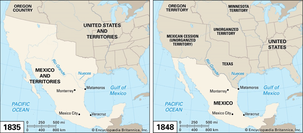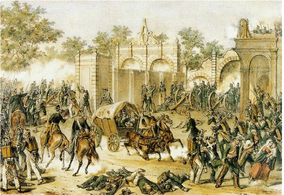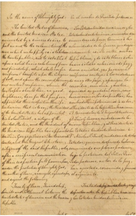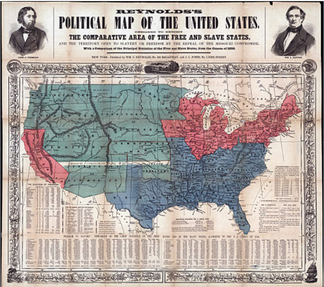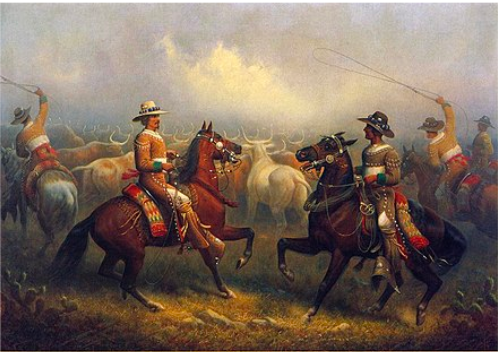|
U.S. territories before and after the Treaty of Guadalupe Hidalgo was signed, concluding the Mexican American War.
|
Mexicans at the Belén Gate in Mexico City defending the critical access point from American forces.
|
When the Treaty of Guadalupe Hidalgo was signed, the Mexican American War was finally ended. The treaty gave the U.S. a large land mass in what would later form many states in exchange for $21 million.
|
The story of how California became an addition to the United States traces back to 1821, when Mexico claimed the land (that is now California) for itself, along with other neighboring areas. In 1836, Texas declared independence from Mexico, leading to the annexation of the territory by the U.S. Congress nine years later. Thus, the Mexican American War commenced. The war was unbalanced, with a massive amount of Mexico’s troops and civilians dying as the war progressed, compared to minimal deaths of U.S. soldiers. On February 2nd, 1848, Mexico was forced to sign the Treaty of Guadalupe Hidalgo because they were losing the war. The treaty granted the U.S. most of Mexico’s northern territories, which would become the states of Arizona, California, Colorado, Nevada, New Mexico, Texas and Utah, as well as parts of Oklahoma, Kansas, and Wyoming. For these massive tracts of land, all that Mexico received was $21.5 millon. Two years later, in 1850, California, along with several other northern states, officially became the 31st state in the United States.
|
The compromise of 1850 allowed California to become a slave-free state. The compromise was focused on territories acquired after the Mexican American war, and allowed California to join the U.S. as a free state.
|
Vaqueros, who were the original cowboys, were renowned for their skills in herding cows.
|
During the gold rush of 1849, massive amounts of white people flocked to California for the chance to strike it rich. At this time, Californios (Catholics of Spanish descent who lived in California) owned large plots of land called haciendas. Rather than buying their own land, settlers built establishments on Californio owned haciendas in an attempt to take the land for themselves. The U.S. government ignored the issue, and made no effort to prevent it. As a result, when the Californios attempted to take their cases to court, most lost the case and their land. Anglos kept working hard to separate the Californios from their land that had been passed down over many generations within the Angeleno family. Californios were discriminated against, and were treated as foreigners in a land their ancestors had been inhabiting before the Anglos arrived.

